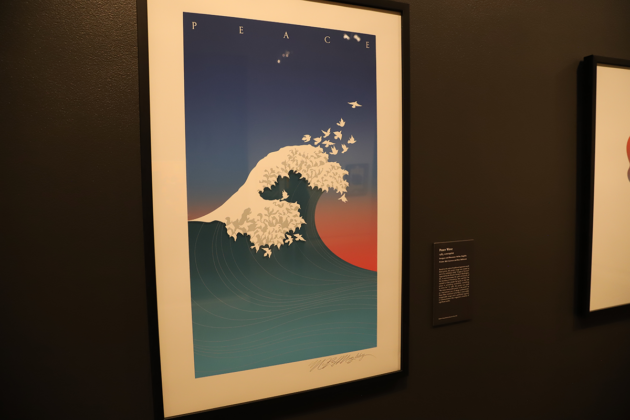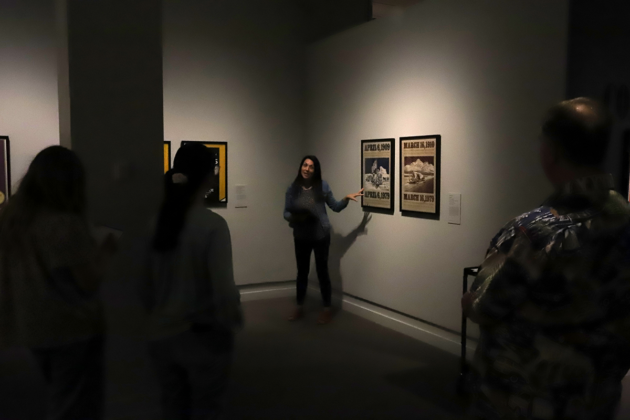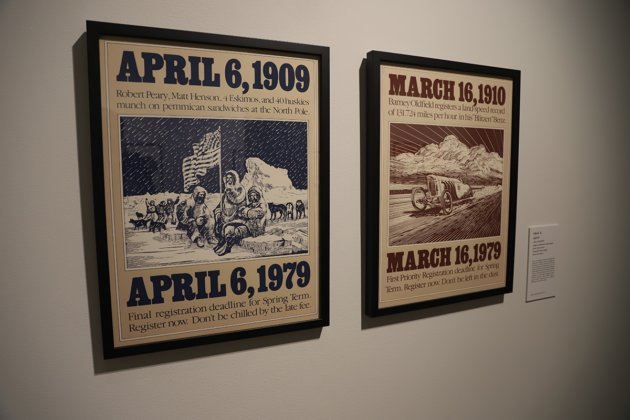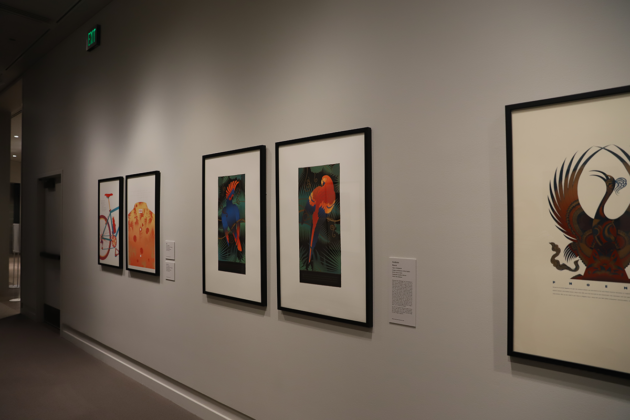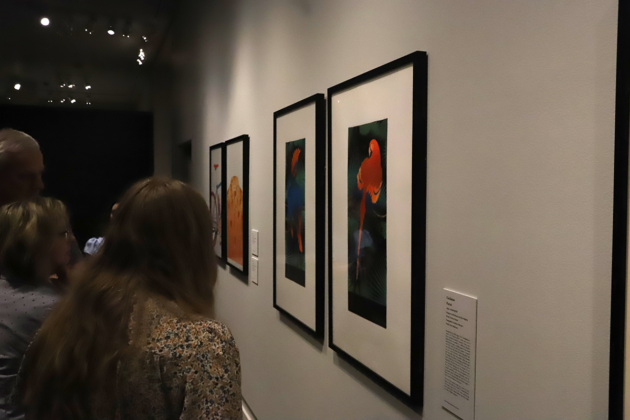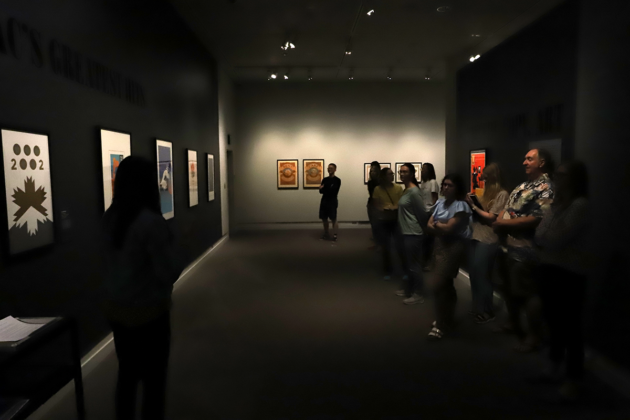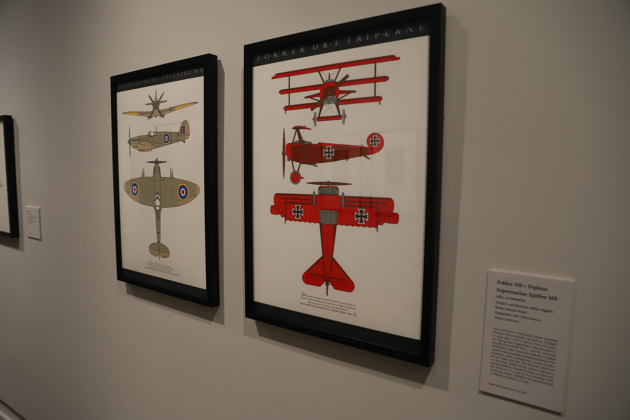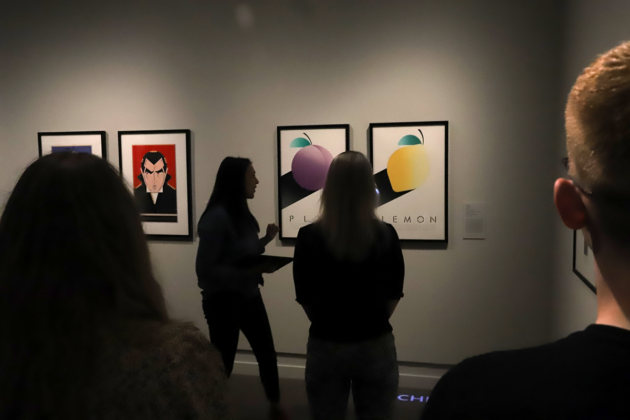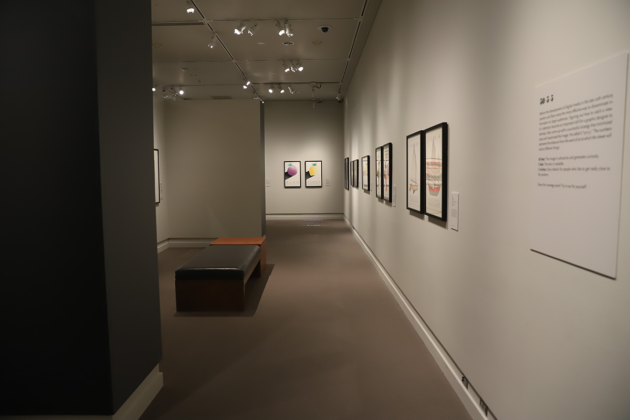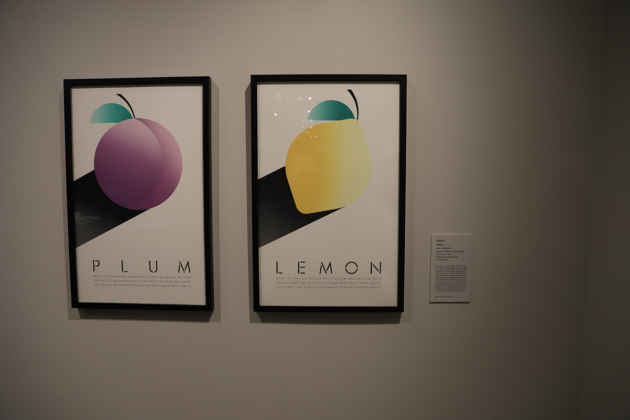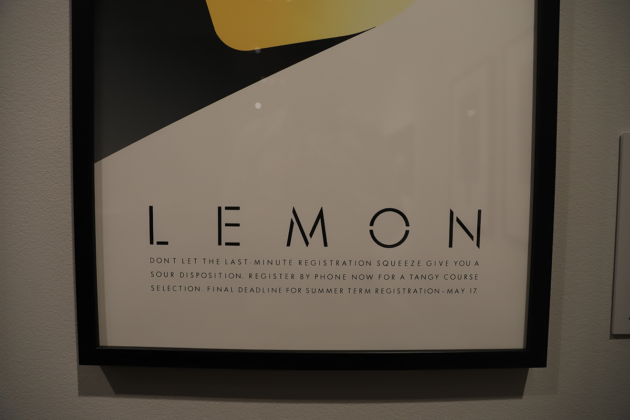The BYU Museum of Art hosted a Gallery Talk for the “Wit and Vision” exhibition on July 12, highlighting the work of Norm Darais and McRay “Mac” Magleby.
Kitsa Oteo, Museum Educator for the MOA, lead more than a dozen people through the exhibition. Guests learned about the history behind the artwork on the walls, the methods of creating them and how Darais and Magleby worked together to create the art on display.
Magleby graduated from the University of Utah in 1966 and became the director of the BYU Graphic Communications department in 1969. Darais graduated from BYU in 1973 with a master’s degree in English Literature before being hired by BYU Graphic Communications in 1978. The two men became friends as they worked together to create posters for BYU.
“As the story goes, they used to sit down at 10 every morning in a little room, and they would brainstorm ideas over whole wheat toast and grapefruit juice,” Oteo said.
During these brainstorming sessions, Darais and Magleby discussed upcoming academic deadlines and found ways to integrate art with the information shared. Magleby would design a poster while Darais determined the wording used for each one. Darais often put puns into the posters.
On a poster featuring a small cake, Darais wrote, “Make registration a piece of cake. Register early. Don’t be frosted by poor class selection.”
After the posters went up informing BYU students about upcoming registration deadlines, many students began tearing them off the walls to keep for themselves. Oteo said that when some of these former students came to the exhibition, they offered to donate the posters they had taken back to the museum.
The posters on display utilized what Magleby termed the “50-5-5 rule” in their design. He asked himself what details could be noticed from 50 feet away, five feet away and five inches away. By focusing on images more than text, Magleby encouraged viewers to come close to the artwork to notice details instead of reading the text from a distance.
“They’re prolonging your experience with the thing that you want them to be engaged with,” Oteo said.
Some of Magleby’s most well known posters were featured prominently along the back wall of the exhibition. While he had some individual pieces, Darais did not.
Darais’s pieces were all co-created with Magleby. Oteo said that Darais was used to that. Oteo also said that Darais loved pulling from his own depth of knowledge of the English language to create the text included in the posters.
“He says that, ‘You know, in this line of work, you have to be comfortable with anonymity,'” Oteo said.
Marissa Albrecht, adjunct instructor in BYU’s department of art, invited her class to attend the Gallery Talk. The gallery, she said, gave her inspiration.
“Looking through any exhibit, it always gets me more excited as an artist,” Albrecht said. “I always want to go home and kind of mimic what those artists are doing, even though I’m not a screen printer myself.”
Albrecht also said that she enjoys learning about the history behind the artwork on Gallery Tours. While she can do research on the artwork herself, coming to the Gallery Tour allows her to benefit from the knowledge shared by the tour guides.
“I know that all the educators here at the MOA are fantastic, and I love bringing my students here for actual tours,” Albrecht said.
BYU senior Tessa Haney, a curatorial intern at the Museum of Art, also attended the Gallery Talk. She took notes on Oteo’s descriptions of the techniques used in creating the artwork. Haney said that there’s something in the “Wit and Vision” exhibition for everybody.
“I think that a lot of people will find the puns written in the subtitles of the posters really engaging, and other people will come for the art,” Haney said.
The “Wit and Vision” exhibition will run until August 26 on the first floor of the Museum of Art.

